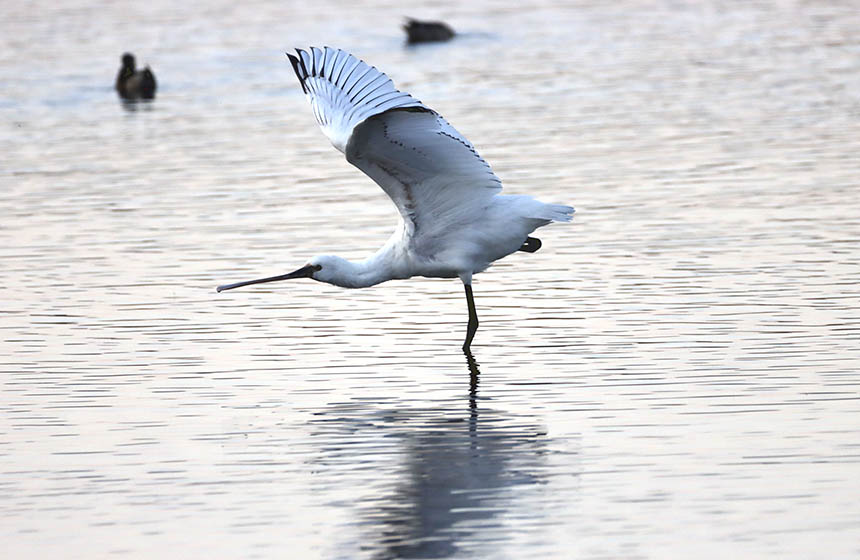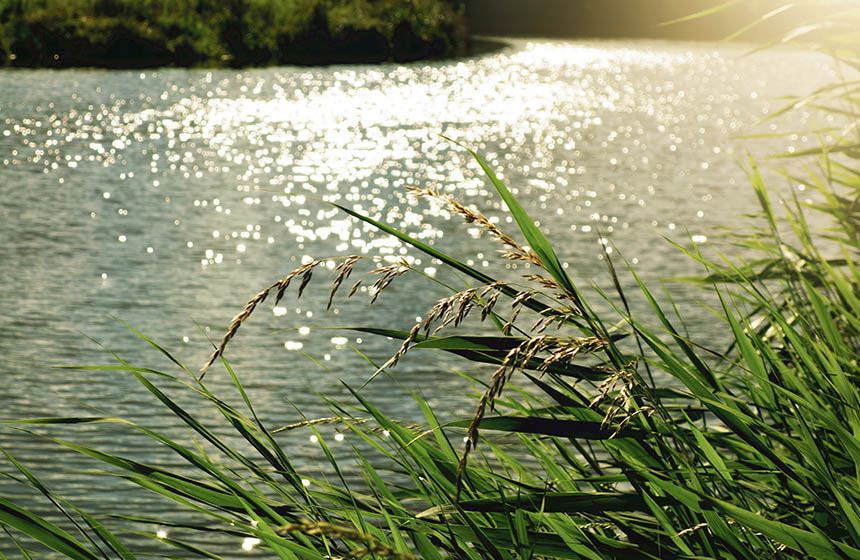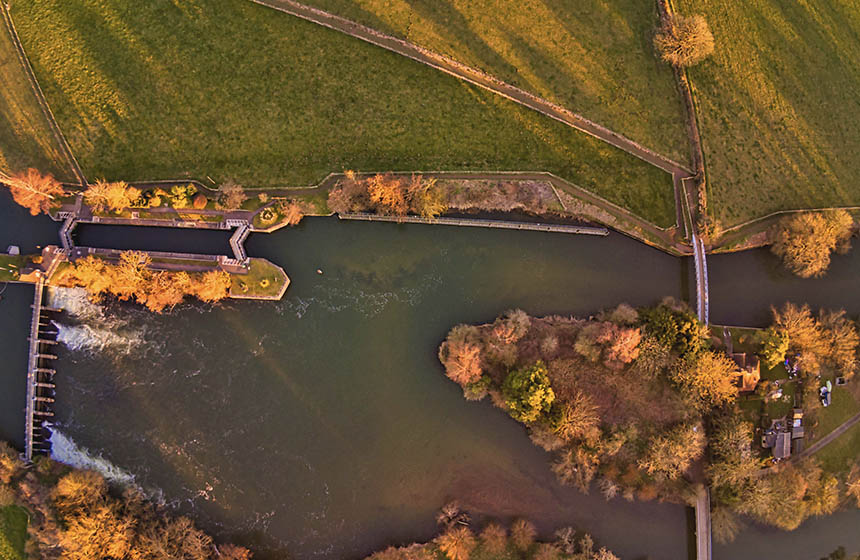Wallasea Island Wild Coast restoration project
Recreating a wetland landscape of mudflats, saltmarsh, lagoons and pasture in an internationally important estuary, close to the Thames Gateway, using a managed realignment strategy and beneficial reuse of clean spoil from the London Crossrail infrastructure project. Europe’s largest coastal habitat restoration project.
Nature-based Intervention:
Commencing in 2008 and completed in 2018, the Royal Society for the Protection of Birds (RSPB) has undertaken a project over a site spanning 900 hectares to restore coastal wetland from reclaimed arable land on Wallasea Island in the Crouch and Roach estuaries in Essex. Using a managed realignment scheme, a partnership with Crossrail to reuse 3 million tonnes of earth excavated from project tunnelling to raise land above sea level and breaches in the existing sea walls, 115 hectares of new tidal wildlife habitat has been created consisting of lagoons, saltmarsh and mudflats.
Overview of context and outcomes:
Since the 16th century, land reclamation for agriculture had transformed five separate saltmarsh islands into Wallasea Island. The Wallasea Island Wild Coast restoration project aims to recreate the ancient wetland landscape of mudflats, saltmarsh, lagoons and pasture to combat coastal flooding and climate change threats and compensate for the loss of tidal habitats elsewhere in England. The Wallasea Island site has been designated as a Ramsar site and Special Protection Area as a breeding site for migratory birds. The project is expected to future-proof coastal areas against sea-level rise, store carbon, and increase habitat for overwintering waders and wildfowl, including Brent geese (Branta bernicl), and increase species diversity by attracting avocets (Recurvirostra), little ringed plovers (Charadrius dubius) and black-winged stilts (Himantopus himantopus).
Case effectiveness on
Climate change
It is reported that the Wallasea Island Nature Reserve site, home to the Wallasea Island Wild Coast Project, sequesters two tonnes of carbon per hectare per year.
The managed realignment was intended to mitigate against an unmanaged, natural breach of the seawalls, assessed as a genuine risk with a 1 in 5 year probability that lower stretches of the seawalls are breached during storm surges, which would cause the estuary to exceed its capacity and lead to erosion. The newly created intertidal areas have been designed so that the salt marsh will rise as sea levels rise and reduce flood risk across the estuary system.
Ecosystem health
Ecological effect: PositiveThe project aims to create new coastal wetland habitats of high value for wildlife. The Wallasea Island site has been designated as a Ramsar site and Special Protection Area as a breeding site for migratory birds, such as Brent geese and avocets, and a permanent home for 20,000 waterbirds, including lapwing (Vanellus vanellus), shoveler (Anas clypeata), redshank (Tringa totanus), spoonbill (Platalea leucorodia) and golden plover (Pluvialis apricaria).
Socioeconomic outcomes
The project is expected to provide nursery areas for commercially important fish, such as bass, herring and flounder. The scheme is designed to improve the defensive protection of buildings located on the west of the island by the construction of a new counterwall, which will also reduce long-term seawall maintenance costs (estimated as between £650,000 and £5-10 million over the 10 years from 2010). The project has also resulted in the addition of 9 km more walking trail space, with more planned.
Governance
Local participation in Governance: PassiveThe project’s inception was 2000, when the RSPB commenced talks with the landowner, Wallasea Farms, about acquiring ~736 hectares of mostly arable farmland on the island. Project planning progressed in the mid- to late-2000s with Defra creating a managed realignment site along the north of Wallasea Island, which RSPB won the tender for in 2007, the partnership with London Crossrail forming in 2008, and the first piece of land acquired in 2009. Crossrail was responsible for the transport of the 3 million tonnes of earth by barge to a specially constructed unloading facility. Natural England manages the Allfleets Marsh on Wallasea Island on behalf of Defra, and RSPB are the managing agents for Natural England, which they do by maintaining the saline lagoons using sluice gates to control water levels.
Finance
Grant funding was provided by Viridor Credits, Enovert Community Trust (£70,000) and Banister Charitable Trust. The Environment Agency also provided significant funding, which secured 155 hectares of saltmarsh and mudflat on Wallasea Island. Crossrail financed the transport of excavated soil materials by barge and the unloading facility on Wallasea Island.
Monitoring and evaluation
The project has three main monitoring activities: (1) impact verification monitoring (pre and post-breaching); (2) sediment settling and ecological functioning monitoring (ongoing and post-breach); and (3) mitigation habitat success monitoring (post-implementation). In 2007, Defra funded a detailed five-year monitoring programme to evaluate the success of the Wallasea wetlands site and determine whether it meets its targets as compensatory habitat, and to verify whether any
physical and ecological changes which occur in the adjacent Crouch and Roach Estuaries are within the limits predicted. Following the project’s completion, the RSPB employs people on a paid and voluntary basis to undertake a range of species monitoring activities, including surveying wildlife on the reserve.
Trade-offs and limitations
No information is available yet on trade-offs.

Intervention type
- Created habitats
- Restoration
Ecosystem type
- Created wetland
Climate change impacts addressed
- Coastal erosion
- Coastal inundation
- Storm surge
Instigators
- Local private sector
- National conservation/environment organisation
- National government/agency
Societal challenges
- Biodiversity conservation
- Climate change adaptation
- Climate change mitigation
- Disaster risk reduction
- Water security
Outcomes
- Food security: Not reported
- Water security: Positive
- Health: Not reported
- Local economics: Positive
- Livelihoods/goods/basic needs: Not reported
- Energy security: Not reported
- Disaster risk reduction: Positive
- Rights/empowerment/equality: Not reported
- Recreation: Positive
- Education: Not reported
- Conflict and security: Not reported
- No. developmental outcomes reported: 6
Resources
Read resource 1Read resource 2
Read resource 3
Read resource 4
Read resource 5
Literature info
- Grey literature




